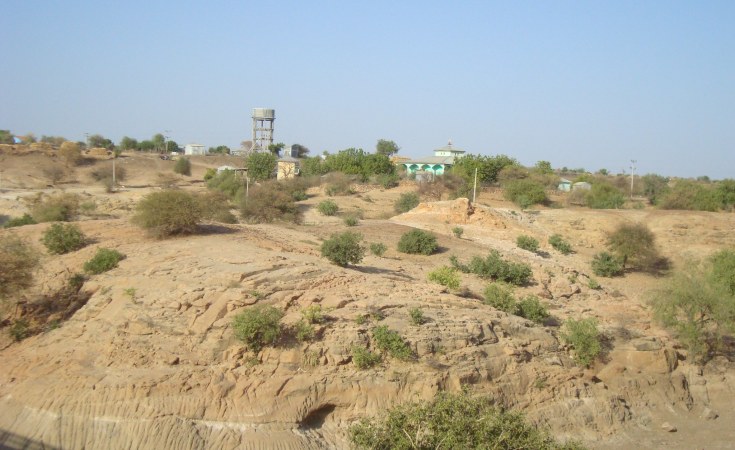An ongoing war between the Ethiopian government and its allies against Tigray, one of its northern states, has led to one of the world's biggest humanitarian crises.
We have used satellite data to track how the conflict and resulting energy crisis has also broken the relationship between humans and nature. People have been forced to use firewood, causing a loss of vegetation in a region on the forefront of environmental rehabilitation. That's the key finding of our new report published by the Conflict and Environment Observatory.
Tigray is semi-arid, and people there, like most of Ethiopia's population, depend on subsistence agriculture fed by rainfall for a large part of their diet. When cropping is disrupted by insufficient rainfall or other causes, alternative sources of income or food are also often insufficient, contributing to catastrophic famines, such as in the 1980s.
Conventional agricultural development policies - such as farmers' access to fertilisers, loans or markets - have only had modest effects on productivity. In the 1990s, the Tigray government instead adopted a conservation-based policy to address persistent food insecurity and low agricultural productivity.
The new strategy focused on making the land better at retaining water and soil, two key ingredients of agricultural production. This meant building stone and soil berms (raised barriers) that slowed down overland water flows, reducing erosion rates.
It also meant creating ponds in which runoff water could be stored. And it involved banning livestock grazing and wood cutting in patches of degraded land so it could regenerate. These "exclosures" act like sponges, allowing rainwater to infiltrate the soil rather than running off.
Over three decades, this approach transformed the Tigrayan landscape, leading to widespread recovery of trees and shrubs, reduced erosion and rising groundwater tables. This allowed the expansion of irrigated agriculture and, most importantly, agricultural yields indeed increased.
Terraces, which slow down the flow of water and trap soil, are visible on these mountain slopes. Over the past few decades, people across Tigray have worked - sometimes in exchange for food or money, but often unpaid - to create such soil and water conservation structures, transforming the landscape and making it more productive.
Why war is bad news for trees
However, this success has now come under threat from the war which began in November 2020. Since then, the region has been under a blockade, leading to a collapse in food and fuel supplies. Electricity has been disrupted and unreliable, and banking and telecommunication services have been suspended.
This has created a huge humanitarian crisis: 1.8 million people have been displaced far away from their homes, and 83% of people in Tigray are estimated to face acute food shortages.
Cut off from alternative supplies for cooking fuel, people may have to turn to local sources of wood, despite regulations against cutting vegetation in exclosures. Contacts in Tigray shared with us their concerns about the pressures that the energy crisis is putting on trees and shrubs. And vegetation declines were indeed visible in the few open-access, high-resolution satellite images available on Google Earth taken after November 2020.
However, it was difficult to gauge the extent of the problem as the region remains largely inaccessible. We therefore turned to open-access data from the EU's Copernicus satellites, which provide regularly updated images of the whole of Tigray.
We looked for areas where woody vegetation had declined since the start of the war, and found certain hotspots with a strong decrease in NDVI, a commonly used index for greenness of the landscape. Potential alternative drivers of these declines - rainfall, temperatures, fires and locust outbreaks - showed little overlap with these hotspots of woody vegetation decline.
Woody vegetation continued to thrive in other places in Tigray during the same period, but - when compared to pre-conflict years - vegetation recovery was subdued. This led us to conclude that declines were likely being intensified by the conflict.
The history of the Tigrayan landscape shows that losing woody vegetation cover leads to soil erosion and water run-off, decreasing agricultural productivity in a region already suffering from widespread hunger and expecting another drought this year. In the long term, pressures from climate change - including increasing downpours, which can contribute to erosion, and droughts - are likely to continue.
Woody vegetation, a key soil and water conservation component, is thus being eroded at a time when it is crucial to the long-term wellbeing of people in Tigray. On a more positive note, previous landscape restoration efforts are providing a buffer for the environmental impact of the war, as losses of woody vegetation are likely occurring from a higher baseline than they would have previously.
Yet we still don't know what impact the war will have on the region's wildlife or water cycles. Neighbouring regions such as Amhara and Afar, into which the conflict has spilled since July 2021, could also be affected.
It is important that the environmental impacts of the war are fully assessed on the ground to inform recovery strategies. Only if the environment thrives can the long-term wellbeing of people in conflict-affected areas be assured.
Henrike Schulte to Bühne, Honorary Research Associate, Zoological Society of London; Doug Weir, Research and Policy Director at the Conflict and Environment Observatory, and Visiting Research Fellow, Dept of Geography, King's College London; Jan Nyssen, Professor of Geography, Ghent University, and Teklehaymanot G. Weldemichel, Postdoctoral fellow, Norwegian University of Science and Technology


